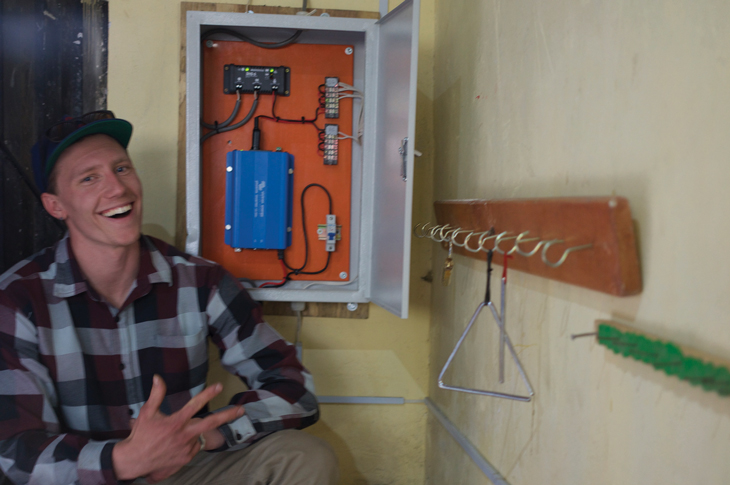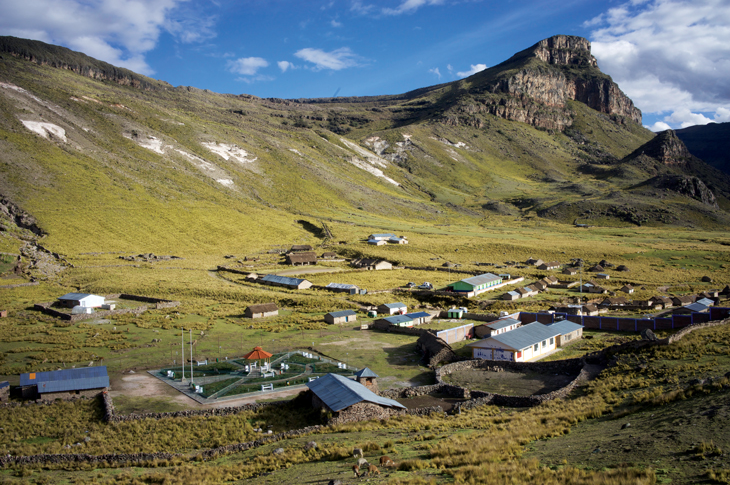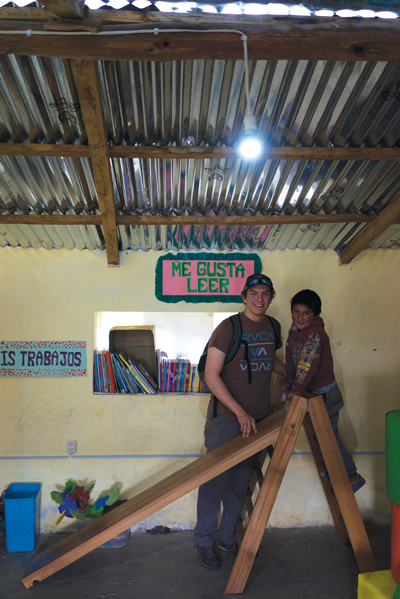Traveling for technology

Mention Peru and thoughts turn to Macchu Picchu and the breathtaking Andes — a dream vacation for those who like to be off the grid.
For a handful of SAIT Electrical Engineering Technology (EET) students, though, modern convenience was the sole focus of a trip to the South American country. There, in rural communities too far flung to connect to any electrical grid, students have used their practical knowledge and skills to install solar power systems.

The work, done in partnership with Calgary-based non-profit Light Up the World, is transformative.
Swapping toxic kerosene lamps, dim candles and single-use batteries for clean, renewable and cost-effective solar power has significant benefits for families. Instead of spending on costly lighting, they can put money toward health care and education fees. The solar power also makes it easier for children to study in the evenings after their chores are done.
“It makes such a difference in their lives,” says Tenzin Blair, who took part in the first trip.

Bringing innovative technology and the skills to install solar power in those Peruvian villages benefits students too. Along with a chance to practice their skills, students will be work-ready in the ever-changing energy industry that increasingly calls for innovation.
“The solar panel installation directly relates to work they could be doing right here at home,” says Darko Stelkic, EET instructor and trip organizer.
“Many well sites in Alberta are in remote areas without electricity and they may be called upon to install solar panels to keep oil wells pumping.”
Plans are already underway for a 2020 contingent of EET students to visit Peru and share solar technology and innovation, but it’s not the only program that connects SAIT students with the chance to practice their technical skills.
In Guatemala, Architectural Technologies students — with the occasional assist from Engineering Design and Drafting Technologies students, as well as those studying journalism at SAIT — can help construct houses in an Indigenous village, alongside the local family who will live in it when complete.
The program has been built from the foundation of a Capstone project that saw two students convert a building into a technical school. Using their designs, drawings and a 3D model, they were able to assist with fundraising, while the relationship they built with the non-government organization Mayan Families has blossomed into a study abroad program.
This story is part of an ongoing series celebrating SAIT’s technology training and innovation. Learn more about study abroad opportunities on sait.ca.
Global Perspective
We prepare students for successful careers and lives.
SAIT'S
2020-2025
Strategic plan

Oki, Âba wathtech, Danit'ada, Tawnshi, Hello.
SAIT is located on the traditional territories of the Niitsitapi (Blackfoot) and the people of Treaty 7 which includes the Siksika, the Piikani, the Kainai, the Tsuut’ina and the Îyârhe Nakoda of Bearspaw, Chiniki and Goodstoney.
We are situated in an area the Blackfoot tribes traditionally called Moh’kinsstis, where the Bow River meets the Elbow River. We now call it the city of Calgary, which is also home to the Métis Nation of Alberta.